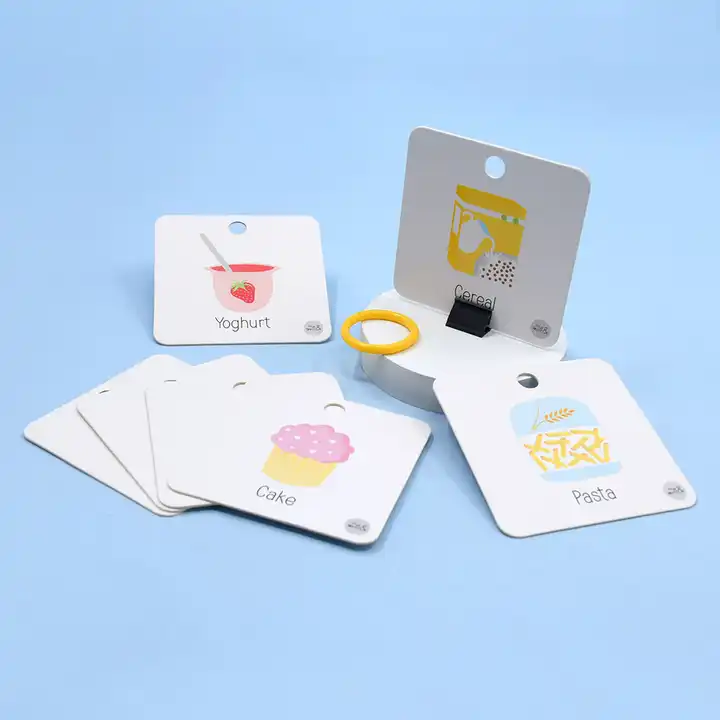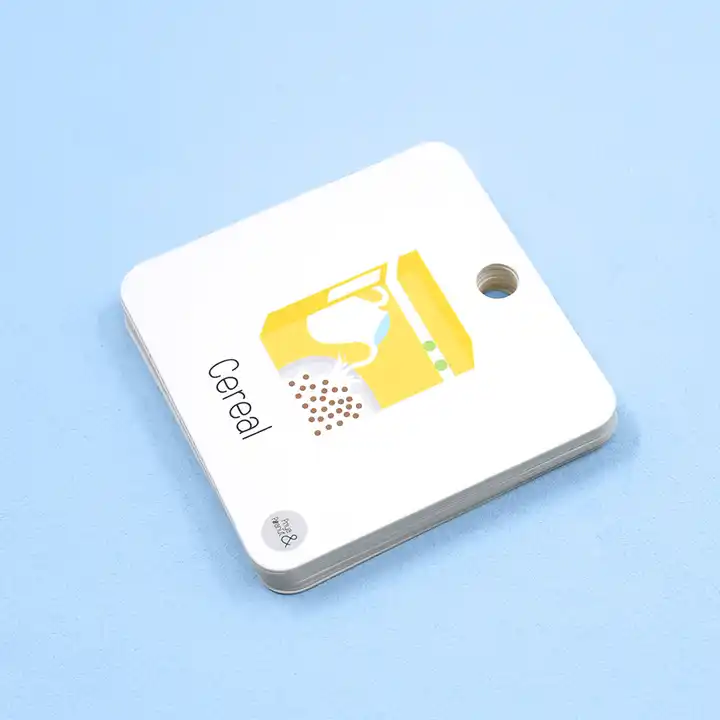Content Menu
● Understanding Flashcards: A Comprehensive Guide
● The History of Flashcards
● Benefits of Using Flashcards
● How to Create Effective Flashcards
● Digital vs. Physical Flashcards
● Effective Strategies for Studying with Flashcards
● Challenges of Using Flashcards
● Conclusion
● Frequently Asked Questions (FAQs)
>> 1. What are flashcards?
>> 2. How do I create effective flashcards?
>> 3. Are digital flashcards better than physical ones?
>> 4. What subjects are suitable for studying with flashcards?
>> 5. How often should I review my flashcards?
● Citations:
Understanding Flashcards: A Comprehensive Guide
Flashcards are a versatile educational tool used to enhance learning and memory retention across various subjects. They consist of cards bearing information on both sides, typically with a question or term on one side and the corresponding answer or definition on the other. This format promotes active recall, a proven method for improving memory and understanding.

The History of Flashcards
The origins of flashcards can be traced back to the early 19th century, with significant contributions from educators like Johann Heinrich Pestalozzi and Favell Lee Mortimer. Pestalozzi, a Swiss educator, is often credited with developing the concept of flashcards as a means to engage students in active learning. His methods emphasized hands-on experiences that would help students grasp complex concepts.
Mortimer's work in the 1830s popularized flashcards as effective learning tools for children, especially in teaching phonics and reading. Her educational books included illustrated flashcards that helped children connect words with their meanings visually.
By the early 20th century, flashcards had become widely accepted in educational settings. The term "flashcard" first appeared in the Oxford English Dictionary in 1923, reflecting their growing popularity as study aids. Flashcards have since evolved, adapting to technological advancements, leading to digital versions that can be accessed via apps and online platforms.
Benefits of Using Flashcards
Flashcards offer numerous advantages for learners of all ages:
- Active Recall: Flashcards encourage learners to retrieve information actively rather than passively reading or listening. This process strengthens memory retention.
- Spaced Repetition: Utilizing spaced repetition techniques with flashcards helps reinforce learning over time, allowing for better long-term retention.
- Portability: Flashcards are easy to carry, making them convenient for studying on-the-go, whether during commutes or breaks.
- Customization: Learners can create personalized flashcards that cater to their specific needs and preferences, enhancing engagement.
- Versatility: Flashcards can be used across various subjects and disciplines, from vocabulary building in language learning to memorizing historical dates or mathematical formulas.
How to Create Effective Flashcards
Creating effective flashcards involves more than just writing down questions and answers. Here are some best practices:
- Keep It Simple: Each flashcard should focus on a single concept or fact to avoid overwhelming the learner.
- Use Images and Colors: Incorporating visuals can enhance memory retention. Different colors can also help categorize information.
- Write in Your Own Words: Paraphrasing information into your own words promotes deeper understanding and helps solidify concepts in your memory.
- Include Mnemonic Devices: Use acronyms, rhymes, or associations to make memorization easier.
- Test Yourself: Regularly quiz yourself using your flashcards to reinforce learning and identify areas needing improvement.
Digital vs. Physical Flashcards
With advancements in technology, learners now have the option to use digital flashcard platforms alongside traditional paper cards. Each has its benefits:
| Feature | Digital Flashcards | Physical Flashcards |
| Portability | Accessible on multiple devices | Easy to carry but bulkier |
| Customization | Easily editable and shareable | Requires manual creation |
| Engagement | Often includes interactive features | Tactile experience enhances learning |
| Visuals | Can include multimedia elements | Limited to printed images |
Digital flashcard apps like Quizlet allow users to create interactive study sets that can include images, audio, and games, making learning more engaging. However, some studies suggest that writing out physical flashcards by hand may enhance memory retention due to the cognitive effort involved in creating them.

Effective Strategies for Studying with Flashcards
To maximize the effectiveness of studying with flashcards, consider these strategies:
- Shuffle Your Cards: Mixing up the order prevents memorization based solely on sequence and encourages deeper recall efforts.
- Group Related Cards: Organizing cards into thematic groups can help reinforce connections between concepts.
- Study Both Sides: Practice recalling information from both sides of the card—question-to-answer and answer-to-question—to deepen understanding.
- Incorporate Peer Learning: Studying with a partner can provide additional motivation and accountability while allowing for discussion and clarification of concepts.
Challenges of Using Flashcards
Despite their benefits, there are some challenges associated with using flashcards:
- Overemphasis on Memorization: Some learners may focus too heavily on rote memorization rather than understanding underlying concepts. It's important to balance memorization with comprehension.
- Time Consumption: Creating high-quality flashcards can be time-consuming. Learners should manage their time effectively to ensure they do not spend excessive hours preparing cards instead of studying content.
- Potential for Frustration: If not used correctly, such as cramming before an exam or relying solely on flashcards without additional study methods, learners may feel overwhelmed or frustrated when trying to recall information under pressure.
Conclusion
Flashcards remain a powerful tool for enhancing learning across diverse subjects. Their ability to promote active recall through engaging formats makes them invaluable for students at all levels. By understanding their history, benefits, effective creation strategies, and potential challenges, learners can harness the full potential of this educational resource. Whether through traditional paper cards or modern digital applications, incorporating flashcards into study routines can lead to improved retention and comprehension of material.

Frequently Asked Questions (FAQs)
1. What are flashcards?
Flashcards are educational tools consisting of cards with questions or terms on one side and answers or definitions on the other side. They are used for memorization and active recall practice.
2. How do I create effective flashcards?
To create effective flashcards, keep them simple by focusing on one concept per card, use visuals and colors for better retention, write in your own words, include mnemonic devices, and regularly test yourself.
3. Are digital flashcards better than physical ones?
Digital flashcards offer accessibility and interactive features but physical cards provide a tactile experience that may enhance memory retention through manual creation.
4. What subjects are suitable for studying with flashcards?
Flashcards can be used across various subjects including languages (vocabulary), history (dates), science (formulas), mathematics (equations), and more.
5. How often should I review my flashcards?
Regular review is essential; employing spaced repetition techniques—reviewing cards at increasing intervals—can significantly boost long-term retention of information.
Citations:
[1] https://www.shichida.com.au/blog/the-power-of-flashcards-how-they-are-used-to-boost-learning/
[2] https://www.brainscape.com/academy/history-of-flashcards/
[3] https://www.bcu.ac.uk/exams-and-revision/best-ways-to-revise/flashcards
[4] https://www.brainscape.com/academy/are-flashcards-effective/
[5] https://travelflips.com/blogs/travel-and-culture/the-history-of-flashcards
[6] https://usm.maine.edu/learning-commons/using-flash-cards/
[7] https://lsa.umich.edu/technology-services/news-events/all-news/teaching-tip-of-the-week/flashcards-a-classic-study-tool-that-works-for-college-students-too.html
[8] https://en.wikipedia.org/wiki/Flashcard
[9] https://risingfellow.com/how-to-memorize-flashcards-more-efficiently/
[10] https://skillmaticsworld.com/blogs/blog/picture-flashcards
[11] https://www.cipcourses.com/blog/why-your-students-should-be-using-flashcards/
[12] https://www.si.edu/spotlight/arithmetic-teaching-apparatus/flash-cards
[13] https://www.reddit.com/r/GetStudying/comments/10i3h7r/studying_with_flashcards/
[14] https://sites.lifesci.ucla.edu/psych-pia/2020-3-6-flashcards-are-you-using-them-effectively-when-learning/
[15] https://www.memoriapress.com/curriculum/classical-studies/timeline-student-flashcards/
[16] https://www.microsoft.com/en-us/microsoft-365-life-hacks/organization/how-to-use-flashcards-to-study-effectively
[17] https://www.linkedin.com/advice/0/what-some-benefits-challenges-using-flashcards
[18] https://www.catholicschoolhouse.com/product/tour-1-history-cards/
[19] https://www.youtube.com/watch?v=mzCEJVtED0U
[20] https://guides.centralpenn.edu/c.php?g=695569&p=4999857
[21] https://sheridancollege.libguides.com/studyingandtesttaking/study-strategies/flashcards
[22] https://summonthejson.com/blogs/tips/the-history-of-flashcards-and-the-current-status
[23] https://www.learningscientists.org/blog/2016/2/20-1
































